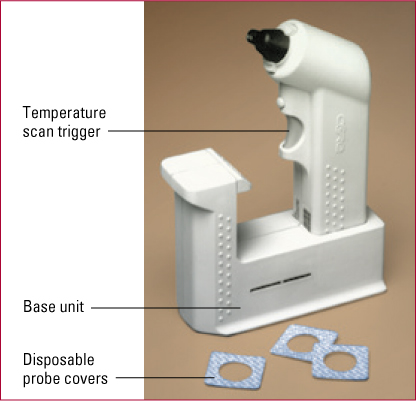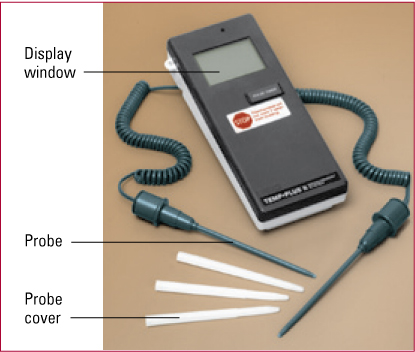Types of thermometers
You can take a patient's oral, rectal, or axillary temperature with a chemical-dot device or an electronic digital thermometer. The temporal artery and tympanic membrane are other sites that can be used for temperature measurement and require special electronic thermometers.
Oral, tympanic, and temporal thermometers are the most frequently used in adults and pediatrics. Which type you choose will depend on the condition of the patient. Here are some site tips:
Do not use an oral thermometer in infants; small children; or patients who are confused, unconscious, or uncooperative. Also, do not use with a history of epilepsy or oral surgery.
In newborns, tympanic and temporal artery sites conserve heat because there is less temperature loss from unbundling and handling the baby.
Temporal artery site gives a rapid measurement and reflects rapid change in core temperature.
Tympanic site requires careful positioning in neonates, infants, and children under 3 years because the anatomy of the ear canal makes it difficult to position.
Tympanic thermometer

Chemical-dot thermometer

Individual electronic digital thermometer

Institutional electronic digital thermometer
